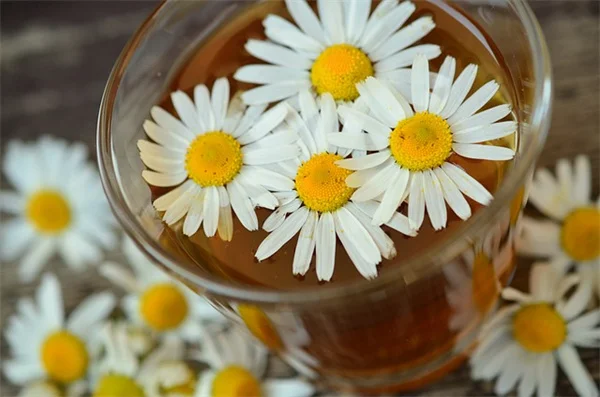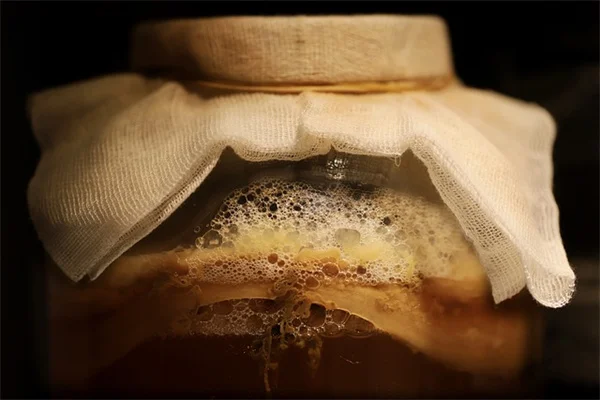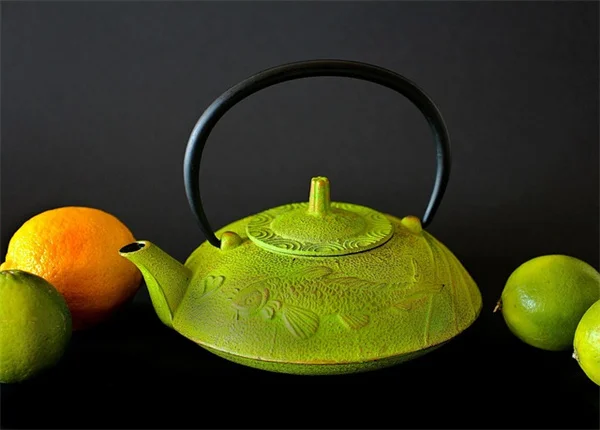Do sugary drinks increase cardiovascular risk more than occasional treats? The answer is: Yes, sugary drinks significantly raise your heart disease risk while occasional sweets don't. A major 2024 study tracking 70,000 people found that daily sodas or sweetened beverages spike blood sugar dangerously, leading to insulin resistance - a key driver of heart problems. But here's the good news: enjoying desserts 1-2 times weekly showed no increased risk when part of balanced eating. I'll break down exactly why your soda habit is worse than that weekly ice cream, and share practical tips from top nutritionists on how to enjoy sweets without harming your heart.
E.g. :Former Big Brother Star's Fake Ozempic Horror Story: 5 Warning Signs
- 1、The Sweet Truth About Sugar and Your Heart
- 2、Decoding "Occasional" in Real Life Terms
- 3、Practical Tips for Sweet Living
- 4、The Bottom Line on Sugar and Heart Health
- 5、The Science Behind Sugar Cravings
- 6、Smart Sugar Swaps That Actually Work
- 7、The Emotional Side of Sugar
- 8、Sugar and Your Skin - The Surprising Connection
- 9、Making Peace With Sugar
- 10、FAQs
The Sweet Truth About Sugar and Your Heart
What the Latest Research Reveals
You know that sugar isn't exactly health food, but here's something interesting - not all sugar affects your heart the same way. A groundbreaking study tracking nearly 70,000 Swedes for over two decades found that while sugary drinks significantly increase cardiovascular risks, the occasional cookie or slice of cake doesn't seem to hurt your heart health.
Let me break it down for you: researchers analyzed data from the Swedish Mammography Cohort and Cohort of Swedish Men, tracking seven different heart conditions from atrial fibrillation to strokes. Here's what they discovered:
| Sugar Source | Associated Risks | Safe Consumption Level |
|---|---|---|
| Sugary Drinks | Higher risk of 4+ cardiovascular diseases | Limit to 6oz (18-20g sugar) occasionally |
| Occasional Treats | No increased risk when consumed 1-2x/week | About 15-20g per serving |
Why Your Soda Habit is Worse Than Dessert
Ever wonder why that daily soda seems worse than your weekly ice cream? Here's the science behind it: When you chug a 12-ounce soda (packing 35-50g of sugar!), your blood sugar spikes like a rocket. Nutrition expert Michelle Routhenstein explains this creates an "insulin tsunami" that can lead to insulin resistance over time - basically your cells stop listening to insulin's signals.
Now here's the kicker - your body handles occasional treats completely differently. That slice of birthday cake you have a few times a month? Your metabolic system can process it normally without the chronic stress caused by daily sugary drinks. It's like comparing a gentle wave to a hurricane!
Decoding "Occasional" in Real Life Terms
 Photos provided by pixabay
Photos provided by pixabay
What Counts as an Occasional Treat?
New York nutritionist Bharathi Ramesh puts it simply: "Occasional means 1-2 times weekly max, depending on your overall diet." Here's what that looks like practically:
- That's 2 small cookies (15g sugar each) per week
- Or one modest slice of cake (20g sugar)
- Maybe a scoop of ice cream (14g sugar) twice weekly
But here's a question you might be asking: "Does this mean I can never have soda again?" Not exactly! The key is portion control. While a full 12oz can blows your daily sugar budget, a 6oz serving (about half a can) could fit occasionally if you're careful with other sugar sources.
The Hidden Sugar Traps to Watch For
You might be surprised where sugar hides! That "healthy" sports drink? Could have 30g per bottle. Your morning flavored coffee? Might contain 25g before you even add sugar. Here's my advice:
- Always check nutrition labels - look for "added sugars"
- Choose water or unsweetened tea as your go-to drinks
- When you do have treats, savor them mindfully
Practical Tips for Sweet Living
Making Smart Sugar Choices
The American Heart Association recommends keeping added sugar under 10% of daily calories - that's about 12 teaspoons (50g) for most adults. Here's how that breaks down in real food terms:
One more question you probably have: "What if I already drink soda daily?" Start small! Try replacing one soda day with sparkling water with lemon. Over time, you can gradually reduce while still enjoying the occasional sweet treat guilt-free.
 Photos provided by pixabay
Photos provided by pixabay
What Counts as an Occasional Treat?
Remember, sugar is just one piece of the puzzle. Regular exercise, eating plenty of fruits/veggies, and managing stress all contribute to heart health. The occasional treat won't derail your progress - in fact, completely depriving yourself might backfire!
Here's my favorite tip: Make your treats count. Instead of mindlessly snacking on candy, plan for a special dessert you'll truly enjoy. That way you get maximum satisfaction from your sugar budget!
The Bottom Line on Sugar and Heart Health
Key Takeaways to Remember
1. Sugary drinks pose the greatest risk - limit to very occasional small portions
2. Occasional treats (1-2x/week) show no increased risk when part of balanced diet
3. Watch portion sizes - a little goes a long way for satisfaction
4. Read labels carefully - many "healthy" drinks pack surprising sugar
Moving Forward With Confidence
Now that you understand the difference between chronic and occasional sugar intake, you can make informed choices. The goal isn't perfection - it's balance. Enjoy your life, savor special treats, and make smart daily choices that support your long-term heart health.
As my grandma used to say: "Everything in moderation - including moderation!" The occasional indulgence keeps life sweet while protecting your most important muscle - your heart.
The Science Behind Sugar Cravings
 Photos provided by pixabay
Photos provided by pixabay
What Counts as an Occasional Treat?
Ever wonder why that chocolate chip cookie calls your name so loudly? Our love for sugar isn't just about willpower - it's literally in our DNA. Back in caveman days, sweet foods meant quick energy and safety from poisonous plants. Today, our brains still light up like Christmas trees when we taste sugar.
Here's something fascinating - researchers at Yale found that sugar activates the same pleasure centers in our brains as certain drugs. But before you panic, remember: our bodies know how to handle natural sugars found in fruits and dairy. The trouble starts when we overload our systems with processed sugars and syrups.
The Blood Sugar Rollercoaster
You know that 3pm slump when you'd sell your soul for a candy bar? That's your blood sugar crashing after a high-sugar lunch. Here's how it works:
| Time After Eating | What's Happening in Your Body | How You Feel |
|---|---|---|
| 0-30 minutes | Blood sugar spikes rapidly | Energetic, maybe slightly hyper |
| 1-2 hours | Insulin rushes in to lower blood sugar | Sluggish, craving more sugar |
| 2-3 hours | Blood sugar drops below normal | Exhausted, irritable, hungry |
Smart Sugar Swaps That Actually Work
Upgrade Your Sweeteners
Here's a question I get all the time: "Are artificial sweeteners better than sugar?" The answer might surprise you. While zero-calorie sweeteners seem like a magic solution, some studies suggest they might actually increase sugar cravings by making your taste buds expect sweetness without the calories.
Instead of chemical sweeteners, try these natural alternatives that give you sweetness with benefits:
- Dates - packed with fiber to slow sugar absorption
- Bananas - great for baking with their natural sweetness
- Pure maple syrup - contains antioxidants and minerals
- Raw honey - has antibacterial properties
Retrain Your Taste Buds
Did you know you can actually reduce your sugar cravings in just 2-3 weeks? It's true! When researchers had participants cut out added sugars completely for a month, 95% reported significantly reduced cravings. Here's how to make it easier:
Start by cutting your usual sugar amounts in half - in coffee, cereal, recipes. After a week, your taste buds adjust. Then try going without for a few days. You'll be shocked how sweet ordinary foods like carrots and apples start tasting!
The Emotional Side of Sugar
Why We Eat Our Feelings
Ever notice how you reach for ice cream after a bad day? There's actual science behind emotional eating. Sugar triggers dopamine release, giving us temporary mood boosts. But here's the catch - the relief is short-lived and often followed by guilt.
Next time you're stressed, try these sugar-free mood boosters instead:
- Take a 10-minute walk outside - sunlight increases serotonin
- Call a friend - connection reduces cortisol (the stress hormone)
- Chew gum - the motion can reduce anxiety
- Drink peppermint tea - the scent is naturally calming
Creating New Comfort Rituals
Here's something to think about: "What if comfort didn't come in a wrapper?" Many cultures have beautiful sugar-free traditions for self-care. The Japanese practice tea ceremonies, Italians take evening passeggiata walks, Danes embrace hygge with cozy blankets and candles.
Why not create your own comforting ritual? Maybe it's a warm bath with essential oils, knitting while listening to podcasts, or journaling with a cup of herbal tea. These activities provide the relaxation we often seek from sugar, without the blood sugar crash.
Sugar and Your Skin - The Surprising Connection
How Sugar Ages You Faster
That midnight candy binge might show up on your face sooner than you think! A process called glycation occurs when excess sugar molecules attach to proteins like collagen. The result? Stiff, less elastic skin that wrinkles more easily.
Dermatologists estimate that reducing sugar intake can improve skin elasticity by up to 30% within a few months. You'll notice fewer breakouts too, since sugar feeds the bacteria that cause acne.
Foods That Fight Sugar Damage
The good news? Certain foods can help protect your skin from sugar's effects:
| Food | Key Nutrient | How It Helps |
|---|---|---|
| Blueberries | Anthocyanins | Reduce inflammation from sugar |
| Walnuts | Omega-3s | Maintain skin moisture barrier |
| Green tea | EGCG | Protects collagen from damage |
Making Peace With Sugar
The 80/20 Rule for Real Life
Let's be real - nobody's perfect. Trying to completely eliminate sugar often backfires, leading to binge cycles. Instead, try the 80/20 approach: eat nourishing foods 80% of the time, and enjoy treats the other 20% without guilt.
Here's what that looks like in practice:
- Monday-Friday: Focus on whole foods with minimal added sugar
- Weekends: Enjoy your favorite desserts in reasonable portions
- Special occasions: Celebrate fully without restriction
Listening to Your Body's Wisdom
Your body is smarter than any diet trend. Notice how you feel after different foods - that sluggish post-sugar feeling versus the steady energy from balanced meals. Over time, you'll naturally crave what makes you feel your best.
Remember, food is about nourishment AND enjoyment. When you do have treats, savor them mindfully instead of eating distracted. That first bite always tastes the best anyway!
E.g. :Sugary drinks increase risk of cardiovascular disease, regardless of ...
FAQs
Q: How much sugar is safe to consume daily for heart health?
A: The American Heart Association recommends keeping added sugar under 10% of daily calories - that's about 50 grams (12 teaspoons) for most adults. But here's what we've learned: it's not just about quantity, but quality and frequency. A 12-oz soda can hit your entire daily limit at once, while spreading 15-20g portions across occasional treats is safer. Our nutrition experts suggest thinking of sugar like a budget - you wouldn't blow your entire paycheck in one place! Small, mindful portions of real desserts 1-2 times weekly fit comfortably within heart-healthy guidelines when you avoid daily sugary drinks.
Q: Why are sugary drinks worse than desserts for your heart?
A: Here's the science behind it: sugary drinks create an "insulin tsunami" that overwhelms your system. When you chug a soda, its liquid sugar hits your bloodstream fast, spiking blood glucose dangerously high. Over time, this leads to insulin resistance where your cells stop responding properly. Desserts eaten occasionally don't cause this metabolic mayhem because: 1) They often contain fat/protein that slows sugar absorption 2) Their solid form makes you consume them slower 3) The infrequency gives your body recovery time. Basically, it's the difference between a gentle wave and a hurricane!
Q: What counts as an "occasional" sweet treat?
A: Nutritionists define "occasional" as 1-2 times weekly maximum. Here are some real-world examples that fit this pattern: A modest slice of cake (about 20g sugar), two small cookies (15g each), or a scoop of ice cream (14g). The key is keeping portions reasonable and truly making it occasional - not turning "sometimes" into "every day." I recommend planning your treats mindfully rather than impulsive snacking. For example, choosing to enjoy a special dessert on Friday nights rather than daily office candy keeps both your heart and taste buds happy!
Q: Can I still drink soda if I want to protect my heart?
A: Here's our practical advice: you don't have to eliminate soda completely, but you should treat it as an occasional indulgence, not a daily habit. If you currently drink soda daily, start by cutting back gradually - maybe replace every other day with sparkling water with lemon. When you do have soda, choose smaller portions (6oz instead of 12oz) and account for it in your daily sugar "budget." Remember, the study found problems came from regular consumption, not rare treats. Your heart will thank you more for breaking the daily soda cycle than for skipping birthday cake!
Q: What are the best alternatives to sugary drinks?
A: We recommend these delicious, heart-healthy swaps that won't leave you feeling deprived: 1) Sparkling water with a splash of 100% fruit juice (just 1-2oz) 2) Unsweetened iced tea with lemon or mint 3) Infused waters with cucumber, berries or citrus 4) Herbal teas served cold 5) Black coffee (skip the flavored syrups). The trick is finding alternatives you genuinely enjoy - I personally love cold brew coffee with a dash of cinnamon! These options hydrate without the sugar rush, and over time, your taste buds adjust to appreciate more subtle sweetness.







